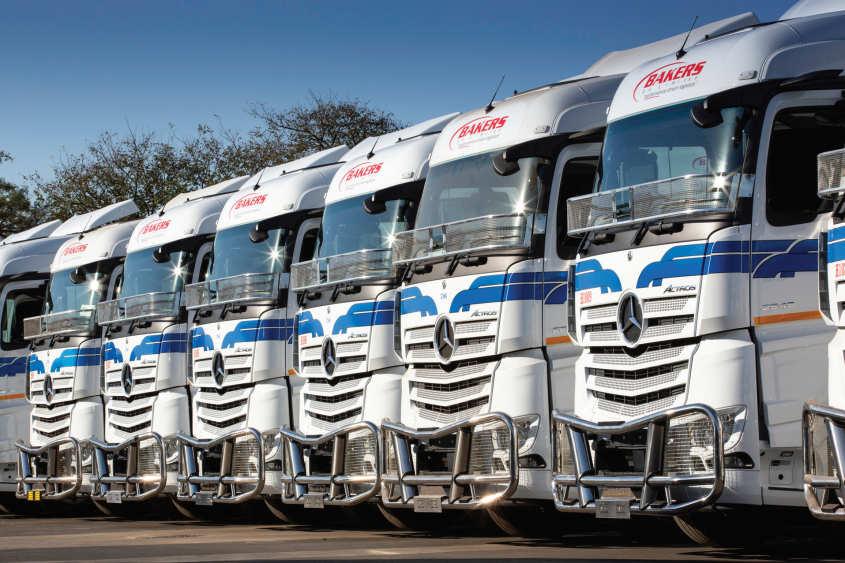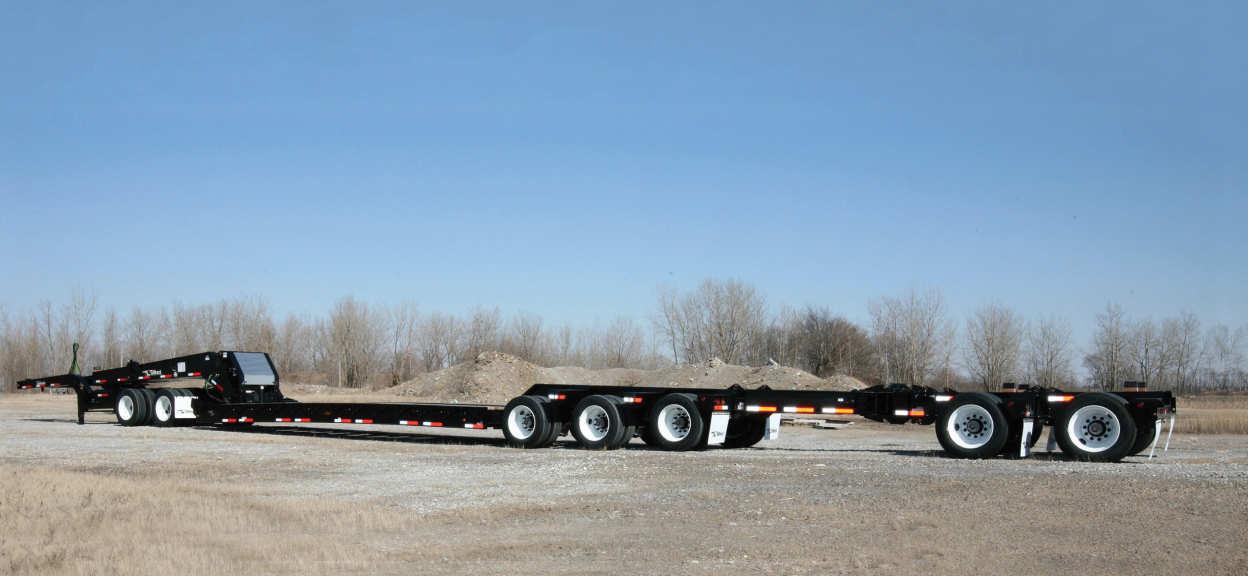
7 minute read
Trucks
Heavy trucks doing the heavy lifting
Robust and reliable heavy-duty trucks from the world’s leading manufacturers have long served Africa well and continue to support businesses as the region’s economy matures.
Not much can happen in Africa without the big trucks that travel the dusty roads and modern highways crisscrossing the continent.
Robust and built to last, these heavy-duty vehicles – made by iconic brands such as IVECO, Daimler, Volvo, and Scania, among others – are the lifeblood of business. In an emerging continent with a bright future ahead of it, that’s some responsibility.
There are few more vital businesses than food supply and last year IVECO delivered 160 of its Trakker trucks to the Phibela agroprocessing complex in Ethiopia, which produces and distributes edible oil across eastern Africa.
Phibela Industrial Plc covers 29 hectares of land leased from Amhara Regional Government around the industrial town of Bure, about 441 km from Addis Ababa.
The company is also part of the Belayneh Kindie Import Export Group, an assembler of IVECO heavy trucks shipped in kits from Europe in completely knock-down units.
The new trucks will be used to cover the route between Bure and Djibouti – a vital task, especially given current constraints facing regional food supplies.
IVECO has recently updated its heavy line with the new IVECO TWAY off-road vehicle designed and engineered for the toughest missions in the most extreme conditions. The latest update also includes the new IVECO S-WAY longhaul truck.
Service veterans
All of these leading truck brands share a proud history in serving the African continent and nurturing intra-regional trade.
Daimler Trucks & Buses celebrates 60 years of assembly operations in South Africa this year, for example. In a note to mark the occasion, Michael Dietz, chief executive of Daimler Trucks & Buses Southern Africa (DTBSA), highlighted the role his company plays in keeping Africa moving and said 2022 is set to be “another exciting year” for the group.
Daimler’s client base continues to endorse that sentiment. Last October, it handed over a whopping 90 Mercedes-Benz Actros 2645LS trucks to local logistics specialists, Bakers SA Limited.
This addition builds on Bakers’ current mega fleet of nearly 650 vehicles, which remarkably comprises 100% Mercedes-Benz Truck products – a true endorsement of the brand.
A month later, South Africa’s Cargo Carriers took delivery of 13 new Mercedes Benz Actros 2645/LS33 Pure truck tractors to be incorporated into its powders (cementitious) division. Together with the Mercedes Benz Truck tractors, Cargo Carriers invested in bulk tankers with optimal payload capacity to complement the truck tractors. The new truck tractors are 6% lighter than the older models, with greater power efficiency, as well as fuel saving technical innovations.
Safety improvements include anti-lock braking systems, acceleration skid control, disc brakes, electronically controlled braking systems, lane assistance, roll over control, and proximity and stability control. As well as safety, performance, and energy efficiency improvements, the leading truck builders are making improvements to their vehicles all the time.
It is bringing with it groundbreaking innovation, with Volvo Trucks recently launching the world’s first trucks that are not only electric, but are also made with fossil-free steel, reflecting its ongoing commitment to the environmental cause.
The steel is produced by Swedish steel company SSAB using a completely new technology, based on hydrogen.
It means today, around 30% of the materials in a new Volvo truck come from recycled materials, and up to 90% of the vehicle can be recycled at the end of its life.
“We are continuously striving to further minimise our climate footprint. We are also moving towards greater circularity in both our operations and our trucks,” said Jessica Sandström, senior vice president product management, Volvo Trucks. ■
Bakers SA Limited takes delivery of 90 Mercedes Benz Actros trucks.
Talbert 65-ton HRG East Coast trailer.
Image Credit: Talbert Manufacturing

Between the road and the load
Troy Geisler, vice president of sales and marketing at Talbert Manufacturing, explains how to calculate true capacity before buying a trailer.
Long before a single load is booked or any wheels turn, someone – usually a fleet manager – needs to determine exactly what is going to separate the road and the load.
There’s a lot riding on this decision because a trailer can be manufactured to many different specifications, with multiple raw material options, dozens of load and geographical considerations, various top speed requirements and hundreds of possible axle configurations coming into play.
To select the right trailer, the one that will require the least amount of maintenance, provide the greatest lifespan and deliver the highest possible return on investment, it is vital to understand the most important factor of all –capacity. For this, there are five contributors to capacity ratings which apply to any kind of open trailer, from flat and step decks to lowbeds. It is up to every buyer to be in tune with the method each manufacturer uses to calculate capacity before making a purchase decision.
Load Concentration
A key difference between manufacturers’ ratings comes in load concentration or the length of the deck that can handle the rated weight. Obviously, a 26-foot, 50-ton lowbed can haul 50 tons. But how much of the deck those 50 tons occupy is just as important as the weight itself. Whereas one trailer might need the entire length of the deck to be rated at 50 tons, another can be rated for 50 tons in a 16-foot span, and another can handle that same weight in half the deck length.
Trailers rated for half the deck length can carry a specified load in just that: half the length of the deck. These ratings give a more realistic indication of the concentrated loads the trailer will be able to handle safely and without structural failure. In addition, manufacturers who build trailers with half-deck ratings often do so with a two-point rigid load base specifically for the tire spacing, or hot spots, of large equipment and heavy machinery.
Load Distribution
How a load is distributed over the deck and the axles can be just as important as the overall weight rating.
It’s important to have the proper trailer configuration to make the load distribution work for a fleet’s particular area of operation. Manufacturers bear some responsibility, too, and should work with buyers to define not just the best trailer for the cargo those buyers will be carrying, but also the best axle configurations for maximising the load.
Speed
Another capacity determinant is speed. While some manufacturers rate their trailers at 55 mph, others rate them at 65 mph. The slower a rig travels, the less added weight or stress is placed on the trailer. That’s due to the fact that, while road dynamics such as potholes, railroad tracks and so on still come into play, the impact on the trailer decreases along with the speed. However, sometimes a 55 mph rating is not as realistic for a carrier as a 65 mph rating. The key is to purchase trailers that will perform at a fleet’s normal operating speeds.
Safety
A trailer’s safety rating also comes into play when discussing capacity. Without understanding the safety rating, it’s difficult for a carrier to get a clear, comprehensive picture of true capacity.
A safety rating is an indicator of how much stress a trailer can safely handle. It encompasses the strength of the raw materials and components that a manufacturer has put into the trailer’s design and construction, how the beams and cross members are configured, and so on.
Not only does the safety rating tell a carrier how strong his trailer is, but it’s also a very good indicator of potential life.
Materials
Safety factors are strongly related to the quality of the components incorporated into the trailer, and that gets down to the nitty-gritty of the steel and the deck material.
Manufacturers have several options when choosing steel. For the most capacity and smallest impact on the trailer weight, some manufacturers use a T1 material with 100,000 psi minimum yield. T1 not only has maximum strength versus ductility but also equates to a lighter, stronger trailer frame over other materials.
A trailer’s decking is continually exposed to the elements, making durable decking with a long wear life another crucial factor.
Overload at risk
It can be tempting to look at a trailer’s capacity rating and stop there. But for a true sense of how much a trailer can handle and how it will hold up under the stresses of a specific operation, fleet managers need to consider everything that goes into that rating. Overloading a trailer consistently over time will mean it will likely fail.
Purchasing the right trailers for a fleet can be complicated and, clearly, the decision is an important one – but there is help available. Many manufacturers have salespeople who know capacity from top to bottom and can help fleet managers select exactly the right trailer with the optimal combination for specific applications and load types. ■






